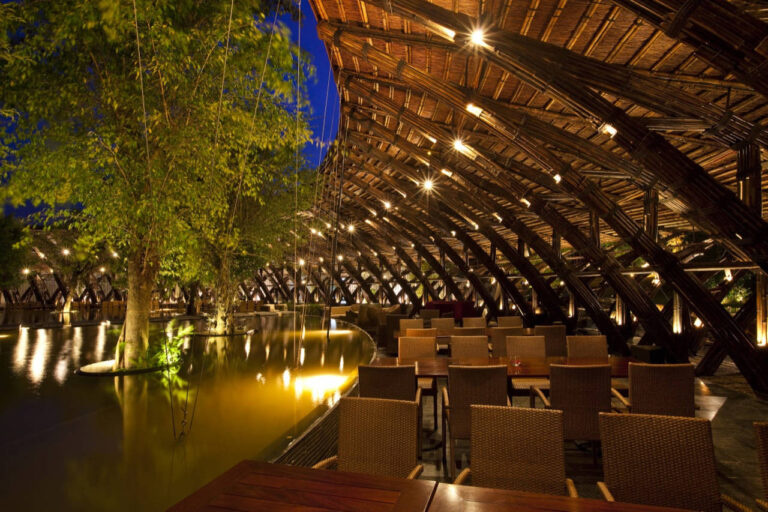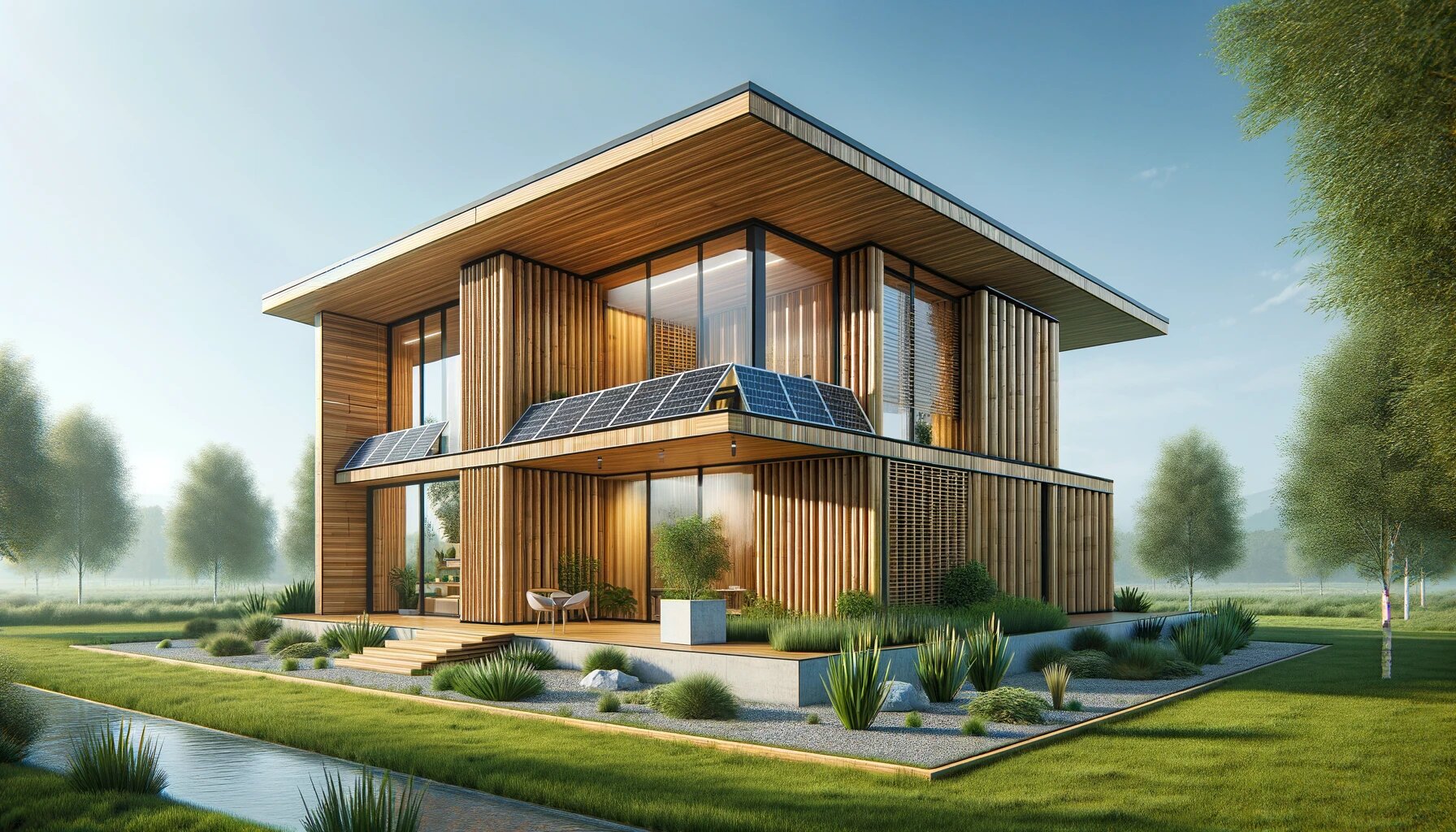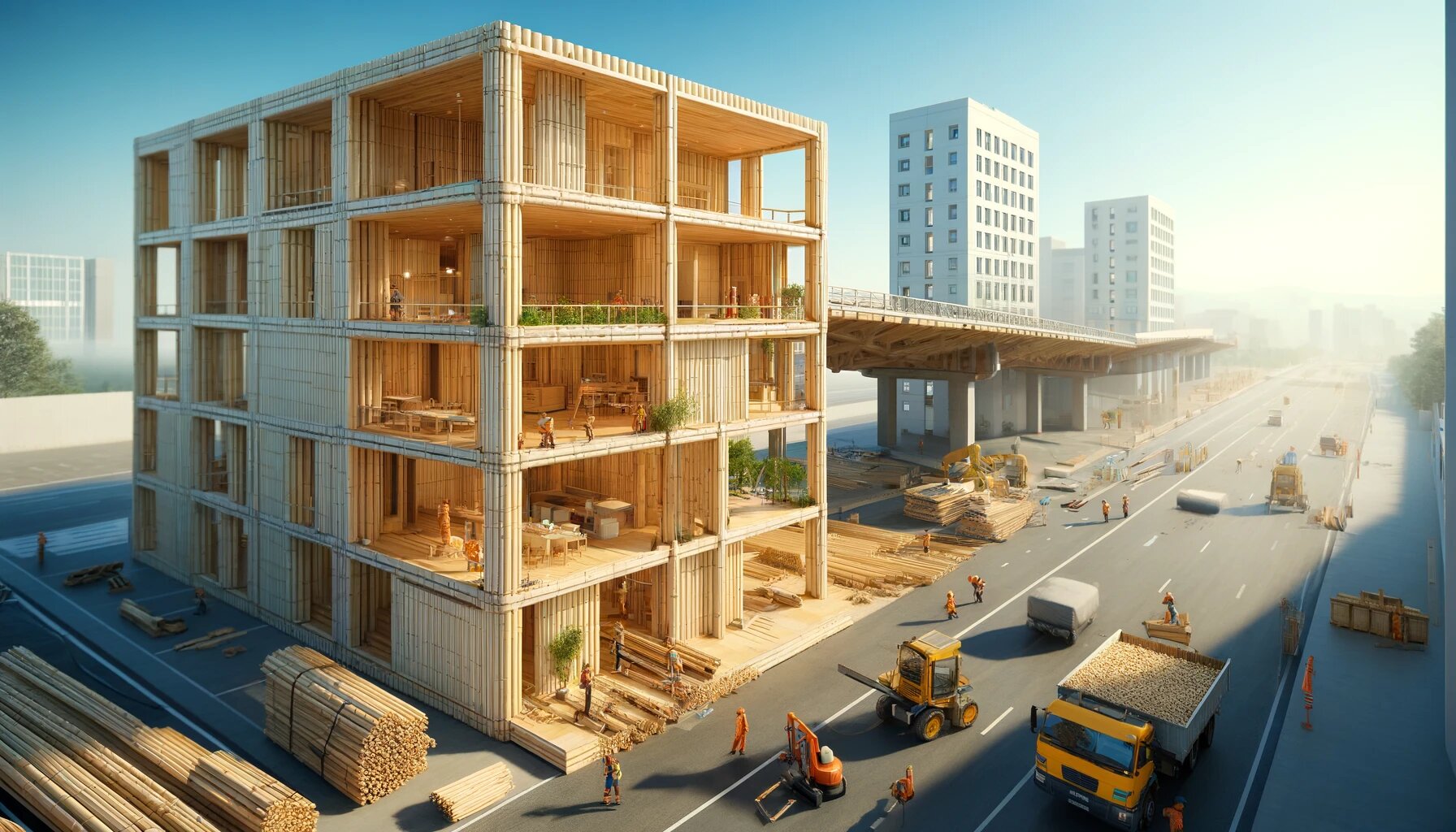In the quest for more sustainable building materials, an unlikely hero is making waves in the construction industry: bamboo. This fast-growing natural resource is not just for garden stakes and decorative screens anymore. Laminated bamboo lumber (LBL) is now being heralded as the material of the future for its impressive sustainability profile and exceptional physical properties. This innovative material is proving to be a viable alternative to traditional construction resources, offering both environmental benefits and high-performance capabilities.
In this blog post, we’ll examine the properties and benefits of laminated bamboo lumber (LBL) that make it a standout choice in the field of construction. We will take a closer look at the range of innovative applications it has enabled, from residential buildings to cutting-edge commercial projects.
What is Laminated Bamboo Lumber?
Laminated bamboo lumber is a high-strength engineered wood made from layers of bamboo strips bonded together with adhesives under heat and pressure. Its unique manufacturing process not only makes it incredibly strong and flexible but also environmentally friendly. The properties of Laminated Bamboo Lumber rival or even exceed those of traditional wood and steel in many aspects, making it an excellent choice for a wide range of construction applications.
The Sustainability of Bamboo in Construction
Bamboo’s sustainability credentials are impressive. It grows rapidly, with some species maturing in just three to five years. This quick growth cycle allows for frequent harvesting without causing ecological damage. Bamboo also absorbs carbon dioxide during its growth, contributing to carbon sequestration, and requires minimal water and pesticides. Moreover, bamboo’s natural abundance in many parts of the world, particularly in Asia, makes it a low-impact resource compared to conventional forest timber or mined materials.
Innovative Uses of Laminated Bamboo Lumber in Construction
Laminated bamboo lumber’s versatility allows it to be used in various innovative ways in both residential and commercial construction:
Residential Housing
In residential construction, Laminated Bamboo Lumber has found its way into the framework of houses, providing a sturdy, resilient, and eco-friendly alternative to traditional lumber. From flooring and wall paneling to the main structural elements, bamboo is being chosen for its aesthetic appeal and durability. For example, in the Netherlands, a prototype bamboo home showcases how Laminated Bamboo Lumber can be used extensively, including load-bearing structures that traditionally would have been the domain of steel or concrete.
Commercial Structures
Commercial projects are also benefiting from the robust nature of Laminated Bamboo Lumber. The new generation of office buildings and retail spaces incorporates bamboo for its modern look and sustainable properties. A notable example is the "Bamboo Wing" at the Vinh Phuc resort in Vietnam, where bamboo is used extensively to create a visually stunning and structurally sound space that complements its natural surroundings.

Specialty Construction
Beyond typical buildings, Laminated Bamboo Lumber is ideal for specialty construction applications such as temporary structures or exhibition spaces, where ease of assembly and disassembly is crucial. Furthermore, due to its natural flexibility and strength, Laminated Bamboo Lumber is an excellent choice for areas prone to natural disasters. It has been used in earthquake-resistant housing projects in seismic hotspots in Asia, demonstrating its potential as a material that doesn’t just build but protects.
Benefits and Challenges of Using LBL
Benefits
The adoption of laminated bamboo lumber in construction brings numerous advantages. Firstly, Laminated Bamboo Lumber is remarkably durable and strong, comparable to traditional hardwoods and some types of steel, making it suitable for a wide range of structural applications. It naturally resists pests and moisture, which enhances its longevity and reduces the need for chemical treatments.
Aesthetically, Laminated Bamboo Lumber offers a unique, warm, and inviting appearance that can be leveraged for both modern and traditional designs. Furthermore, it is cost-effective and requires minimal maintenance over its lifespan, providing an economically viable option for large-scale construction projects and individual homeowners alike.
Challenges
Despite its benefits, the use of Laminated Bamboo Lumber also presents some challenges. One significant hurdle is market availability. As a relatively new material in the construction sector, Laminated Bamboo Lumber is not as readily available as more established materials like wood, steel, or concrete, which can limit its use in certain regions or projects.
Additionally, there is still some resistance within parts of the construction industry, largely due to unfamiliarity with bamboo’s structural capabilities and best use practices. Technical challenges also exist, particularly in the areas of joining and machining Laminated Bamboo Lumber. Specialized equipment and techniques are often required to achieve the desired construction standards and aesthetics, necessitating training and experience that many professionals may not yet possess.
Moreover, there’s a need for ongoing development in adhesive technologies to ensure that the bonds used in Laminated Bamboo Lumber production are as environmentally friendly as the bamboo itself. This ongoing development is crucial to maintaining the sustainability profile of LBL as a green building material.
Future Prospects of LBL in Construction
The future of laminated bamboo lumber (LBL) in construction is marked by promising advancements and increasing market acceptance. Research and development are focusing on enhancing the material’s properties and usability. Innovations include improving adhesive technologies to ensure environmental friendliness and increasing fire resistance to meet stringent safety standards.
Additionally, there is significant exploration into creating hybrid materials by combining Laminated Bamboo Lumber with recycled plastics or metals, which could yield composites with superior strength and durability while maintaining sustainability. The integration of Laminated Bamboo Lumber with advanced manufacturing technologies like 3D printing also holds potential, enabling the precise creation of complex structures and custom designs.
As the construction industry continues to emphasize sustainable practices, Laminated Bamboo Lumber’s role is likely to expand. Policy changes and tighter regulations on building materials’ environmental impact could favor Laminated Bamboo Lumber due to its eco-friendly profile. Furthermore, as more construction projects successfully incorporate Laminated Bamboo Lumber, showcasing its practical benefits and aesthetic appeal, industry professionals’ familiarity and trust in the material are expected to grow.
This shift, supported by educational efforts and sustainability certifications, positions Laminated Bamboo Lumber as a leading material in the move towards greener building practices worldwide.
Conclusion
As we explore beyond the basics, it’s clear that laminated bamboo lumber is not just an alternative but a superior choice in many construction applications. With each bamboo building, we move closer to a sustainable construction paradigm that doesn’t compromise on quality or performance.
Have you considered using bamboo in your construction projects? Share your thoughts or contact Coastal Custom Products to learn more about how this remarkable material can be integrated into your next project.



